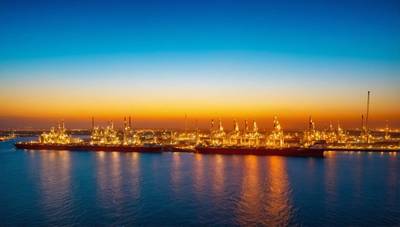Shell anticipates a 60% increase in global LNG demand between 2040 and 2040
Shell's annual report said that the global demand for liquefied gas will increase by 60% by 2040. This is mainly due to economic growth in Asia and AI, as well as efforts to reduce emissions in heavy industry and transportation.
As the world moves to cleaner fuels, demand for natural gas is increasing. Shell's 2025 LNG annual outlook forecasted that the industry will demand between 630 and 718 millions metric tons of LNG per year by 2040.
The most recent forecast from the world's biggest LNG trader shows a higher global LNG demand than last year, when it was estimated at 625 to 685 millions tons per annum.
Tom Summers is Shell's senior Vice President for LNG Marketing and Trading. "Updated forecasts show the world will require more gas to meet development goals and decarbonisation targets," he said.
Shell said that China and India, which are the two largest LNG importers in the world, will increase their LNG import capacity as well as gas-related infrastructure to meet growing demand.
The demand for natural gas in China is expected to increase this year, as the economic stimulus plans boost industrial demand. However, trade tensions between China and the U.S. could limit growth.
The International Energy Agency predicts that India's natural gas demand will double between 2023-2030, and its consumption will increase by 60%. This will require the country to import LNG, since the domestic production is expected to grow at a much slower rate than the demand.
Shell has stated that by 2030 more than 170 millions tonnes of LNG will be available to meet the rising demand in Asia. Shell has not specified the exact start-up dates of new LNG projects.
The report stated that the United States will be the main exporter of LNG, with a potential growth rate of 180 million tons per year by 2030, and a third share in global LNG supply.
The report stated that in 2024 the global LNG trade will only increase by 2 million tons, to 407 millions tons, due to the constraints of developing new supplies. This is the smallest annual growth since the last decade.
The demand for LNG in Europe increased in the first quarter of 2024 as colder weather caused storage stocks to be depleted faster.
The demand for LNG in Europe is expected to increase by 2025.
The growing use of renewable energy sources in Europe's power sector will require LNG to keep up with the demand. Shell's report stated that existing natural gas infrastructure can be used for imports of bio-LNG, synthetic LNG or green hydrogen. (Reporting from Marwa Rashad and Emily Chow, both in London; editing by Sonali Paul).
(source: Reuters)








